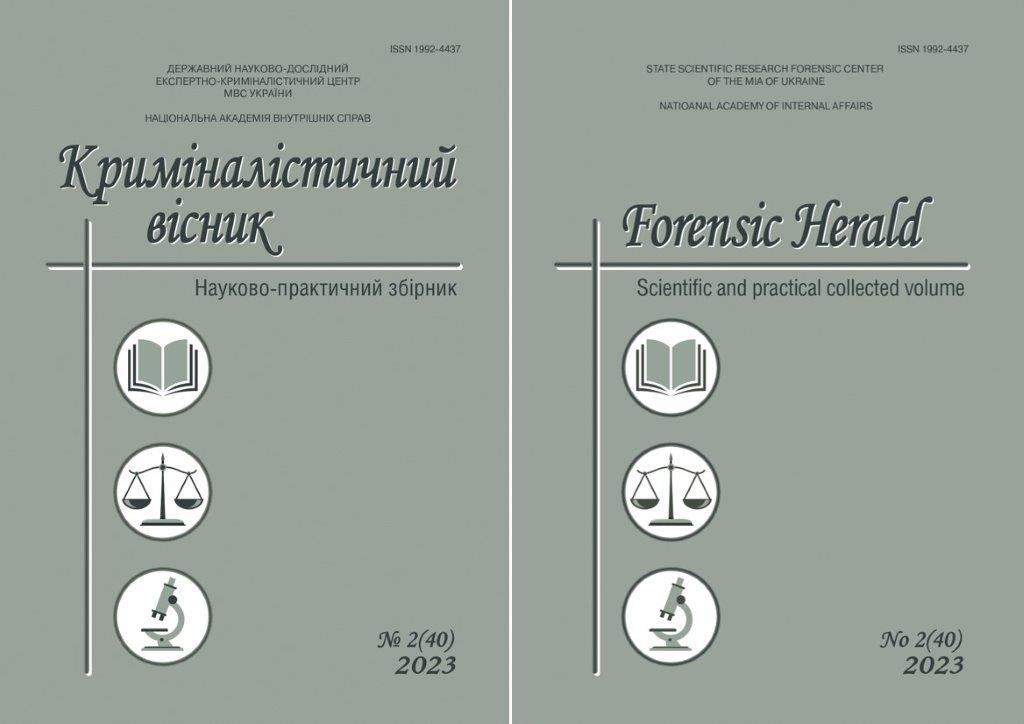AUTOMATION OF DETERMINING DENSITY OF FLAT OBJECTS WITH COMPLEX SURFACE CONTOURS AS A GENERAL FEATURE IN FORENSIC INVESTIGATIONS
DOI:
https://doi.org/10.37025/1992-4437/2023-40-2-88Keywords:
object boundary recognition, identification of trasological studies of the whole by parts, digital graphic image, software, density, common featureAbstract
The paper explores the peculiarities of the software developed by the staff
of the Sumy Scientific and Research Expert-Criminalistic Center
of the Ministry of Internal Affairs of Ukraine and Sumy State University,
based on the programming platform and numerical computations
of MATLAB. This software enables the investigation
of the density of flat
objects with complex surface contours as a general feature during
forensic examinations. Methodology. Various methods were
employed during the research, including the physical method for
investigating the material's physical properties, mathematical
methods for calculations based on the obtained data, general logical
methods, particularly synthesis and analysis, and statistical methods
within which forms of interaction among the elements of
the whole were identified, as well as generalization. The scientific novelty.
The feasibility of utilizing an original software product for calculating
the density of flat objects based on direct measurements
of thickness and mass of the researched items, as well as computing
area values from digital images of complex perimeter contours has
been substantiated. The program is founded on methods for
recognizing boundaries in digital images and
measuring object
mass using weighing techniques. MATLAB programming
platform, supplemented with the Image Processing Toolbox package,
served as the software environment. Results. The main ideas
and principles forming the foundation of the program's
operation have been characterized. Defined
tasks include:
creating a convenient system for input and storage of research data;
automation of recognizing boundaries in the digital image of the
studied object; automation of cleaning the research area in the
digital image from minor contaminations; computation of the
area of the digital image of the investigated object; calculation of the
density of the researched objects based on entered data, considering
measurement errors, and so on. Guidelines for preparing research
samples have been recommended for generating digital images
for further processing in the program (capturing the image of the
research object with a reference sample at the same scale; preliminary
cleaning of the digital image from severe contaminations).
The program's functionality was demonstrated
through the
example of investigating the density of a paper fragment. Precision
of measurements, usage limits, drawbacks, and avenues for
further enhancement of the proposed program have been defined.
Future research directions include improving the client-side of the
program, allowing the examination of digital images of objects
and standards without their prior separation. Additionally,
an automatic calculation of density in grams per square meter
(GSM) is suggested for direct comparison with density values
stated by office paper manufacturers.



